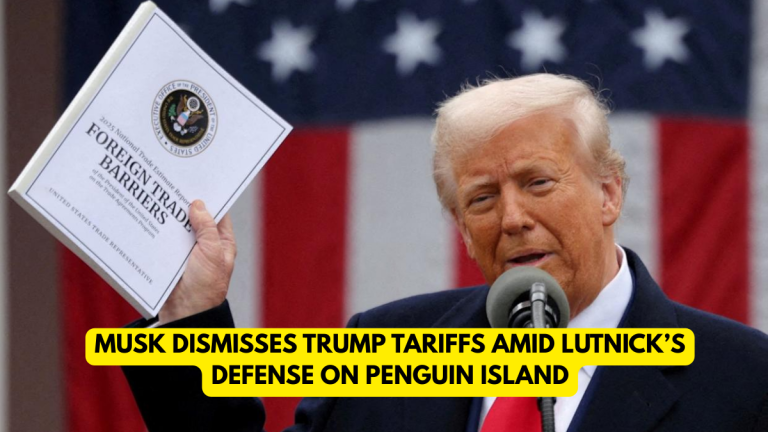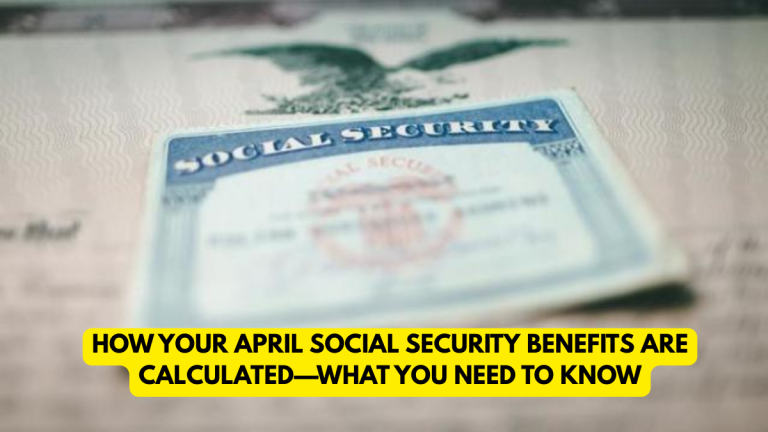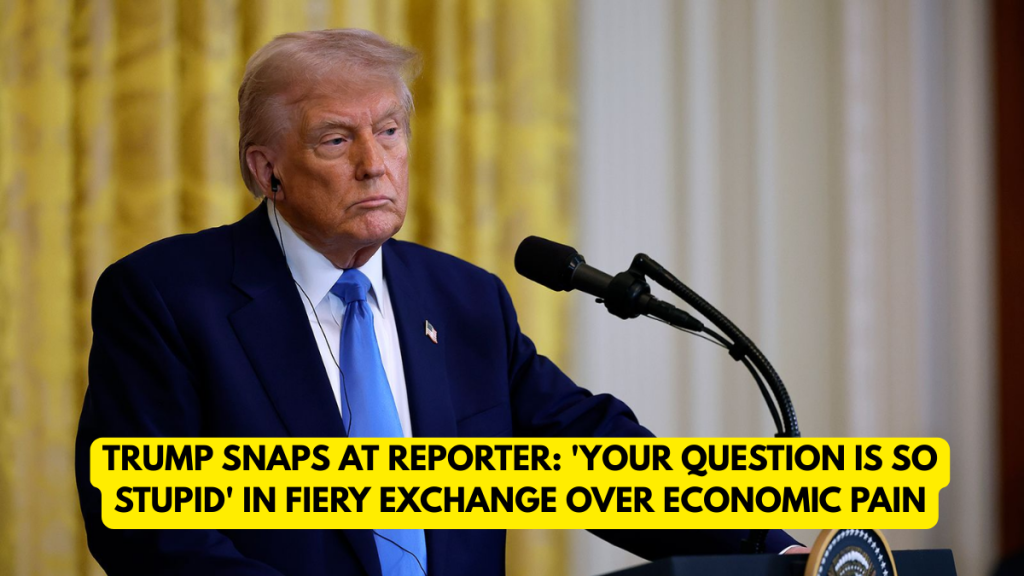
Former President Donald Trump lashed out at a reporter on Saturday after being asked about the level of economic damage he would be willing to endure amid plunging markets caused by his aggressive tariff strategy. The sharp retort—“I think your question is so stupid”—came during a tense press briefing where Trump defended his administration’s recent trade policy shift.
The comments come amid significant volatility in U.S. financial markets. Both the Dow Jones Industrial Average and the S&P 500 dropped more than 2% in early trading on Monday, extending a three-day slide that has wiped out trillions of dollars in market value.
“Sometimes You Have To Take Medicine”
Pressed on whether there was a point at which the economic pain would become too severe, Trump replied dismissively, stating, “I don’t want anything to go down, but sometimes you have to take medicine to fix something.” (Reuters)
The former president defended his decision to impose a sweeping 10% base tariff on all imported goods, with higher rates for countries that he claims are taking advantage of the United States. According to Trump, the tariffs are part of a broader effort to correct “decades of trade abuse” and reignite American manufacturing.
Markets in Freefall
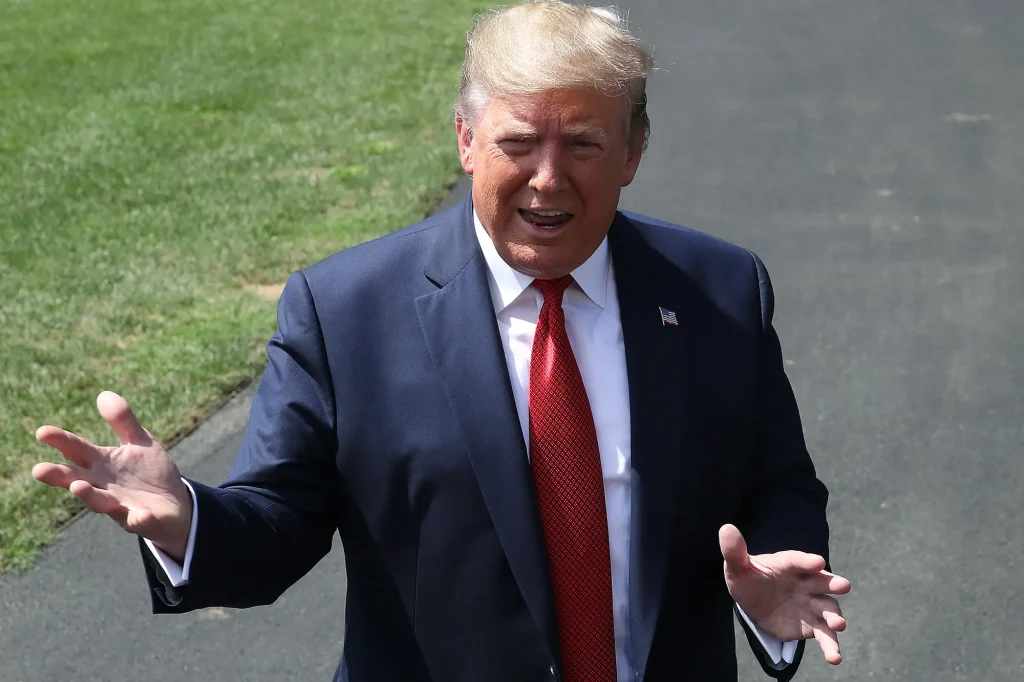
The U.S. stock market responded sharply to the new trade measures. The Dow Jones and the S&P 500 experienced steep losses, marking the third consecutive day of decline. Analysts warn that investor sentiment is being undermined by uncertainty over the full scope and duration of Trump’s proposed tariffs.
Despite rumors circulating on Wall Street about a possible 90-day delay in implementing the new tariffs, the White House has firmly denied any such plans. The administration maintains that the tariff strategy will be implemented as scheduled and will not be softened in response to market pressure.
Tariffs as a Long-Term Fix
Commerce Secretary Howard Lutnick and senior trade advisor Peter Navarro have both publicly supported the tariffs. Lutnick claimed that the new policy would “revive U.S. manufacturing and reduce reliance on foreign goods.” Navarro added that the market would not only recover but would thrive in the long run.
“In two years, you’ll see the Dow at 50,000,” Navarro told reporters. “Americans just need to stay the course and trust the process.”
The administration is pitching the tariffs as a reset of the global trade landscape—especially targeting China and Japan, which Trump accuses of exploiting U.S. trade policies for decades. However, Trump made it clear that negotiations with China are off the table unless the U.S. sees a drastic reduction in its trade deficit.
“We’re not talking to China until we fix the mess they’ve made of our economy,” Trump said. “This is about standing up for American workers.”
Criticism and Concern
Economists and financial experts have voiced concern over the abrupt policy shift and its timing. Many warn that escalating trade tensions could lead to inflation, supply chain disruptions, and job losses—especially in industries that rely on imported raw materials and goods.
The U.S. Department of Commerce has not yet released a detailed impact assessment of the tariffs, but early estimates suggest that prices for consumer goods could rise sharply in the coming months.
Additionally, the Office of the United States Trade Representative (USTR) is under pressure to provide more transparency about the countries and sectors affected by the new tariffs and to clarify the process for exemptions.
Americans Urged to “Stay Calm”
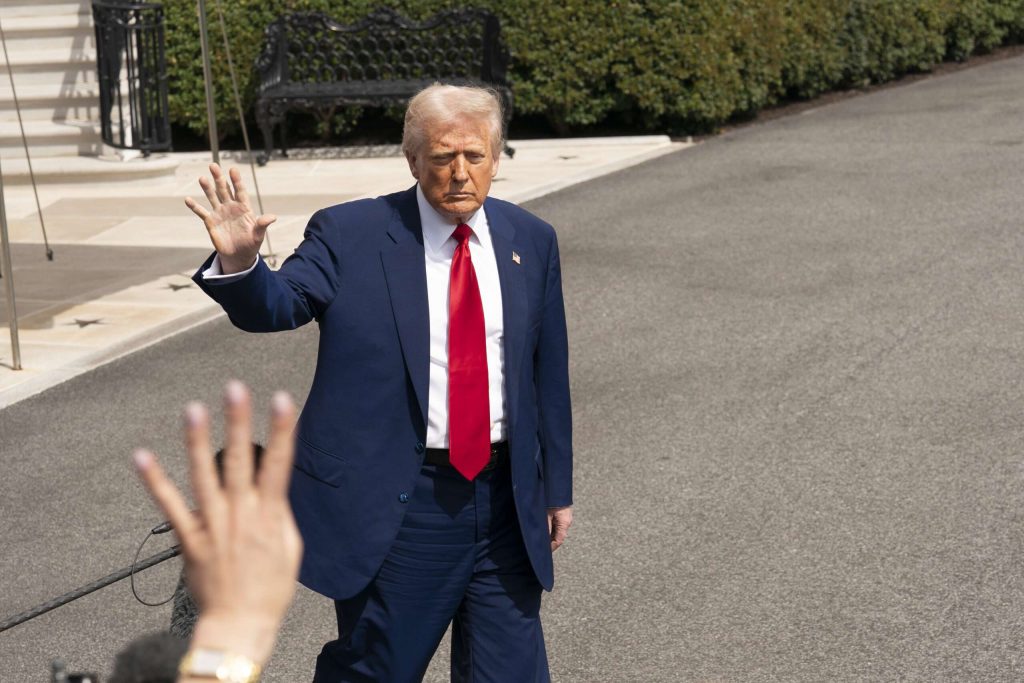
As market panic grows, Trump is attempting to reassure Americans that the short-term losses are a necessary sacrifice for long-term gain.
“Don’t be a panican,” Trump said on Sunday, coining a phrase that has since gone viral. “This is about making America strong again, even if it hurts a little now.”
While the administration remains firm in its stance, critics argue that the economic damage could be irreversible if not managed carefully. Former Federal Reserve officials have urged caution, emphasizing the importance of measured policymaking and clear communication to maintain market stability.
Looking Ahead
As the country grapples with the effects of the new trade policy, all eyes are on upcoming economic indicators—including job numbers, manufacturing output, and consumer confidence.
Whether Trump’s tariff gamble pays off remains to be seen, but one thing is certain: his combative style and bold economic moves continue to polarize both Wall Street and Main Street.
For more updates on U.S. trade policy and tariffs, visit the U.S. Trade Representative’s Tariff Information Center and the Bureau of Economic Analysis for economic impact reports.

